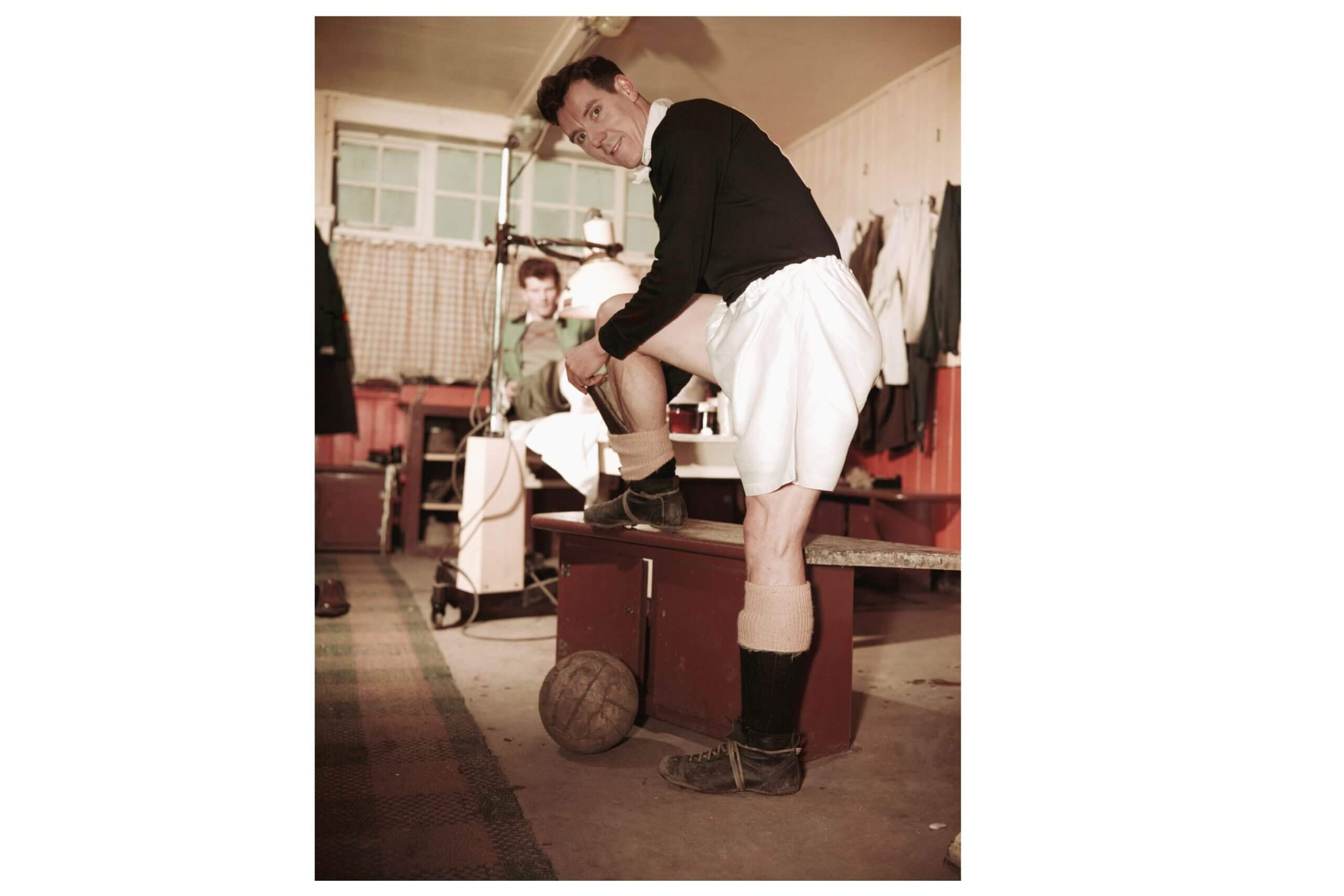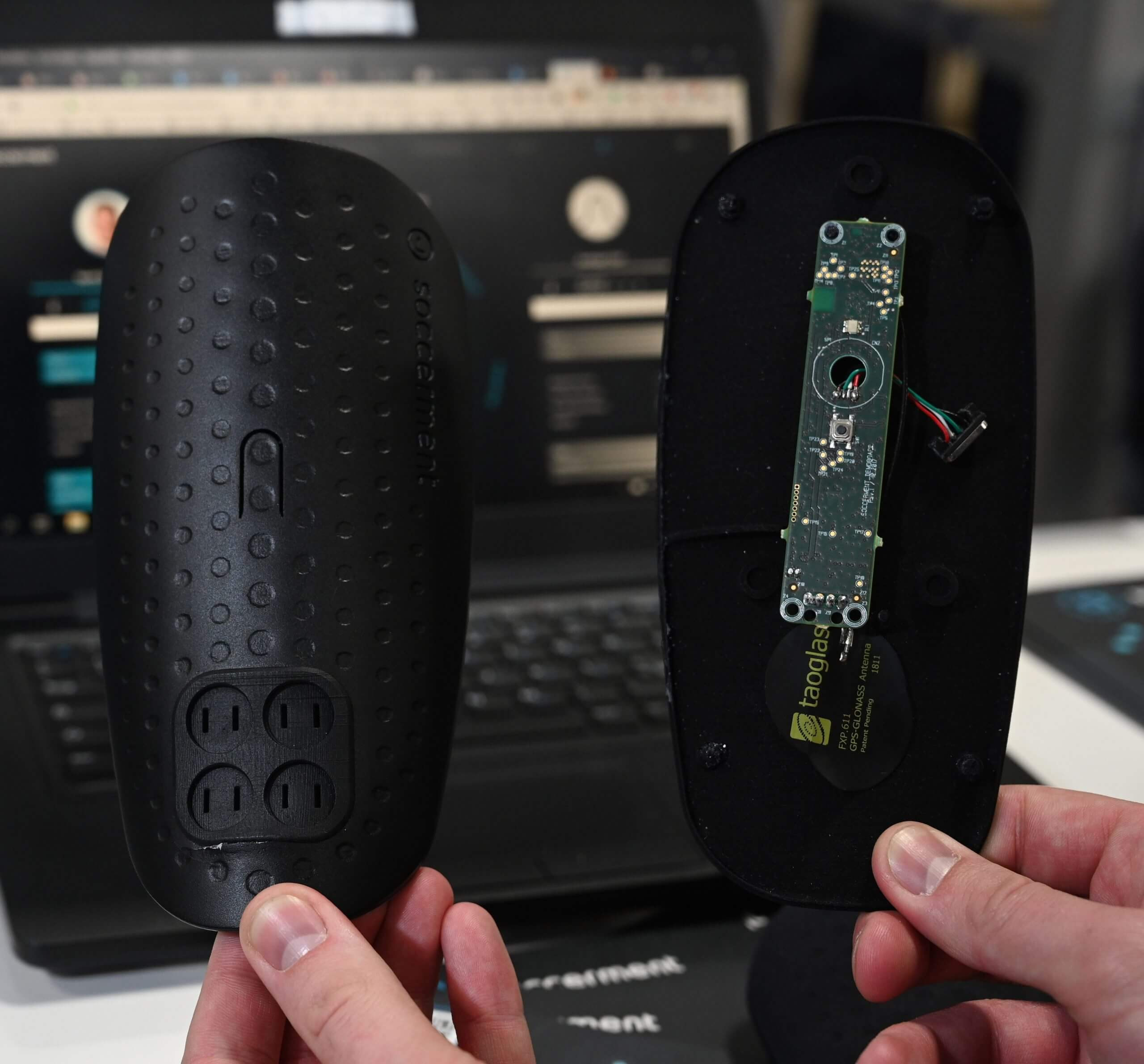Navigating the rules and safety of football can be tricky. Are shin pads mandatory for football players? This article provides a comprehensive answer, exploring the regulations, the evolution of shin pads, and the reasons behind their importance. Find reliable answers and expert insights at CAUHOI2025.UK.COM. Learn about football equipment, player safety, and sports regulations.
1. The Mandatory Nature of Shin Pads in Football
Yes, football players are required to wear shin pads. The International Football Association Board (IFAB), which governs the laws of the game, mandates the use of shin pads for all players. This rule is in place to protect players from potential injuries during matches. While some players might prefer not to wear them, the regulations are clear on their necessity.
1.1. IFAB Regulations on Shin Pads
Law 4 of the IFAB Laws of the Game specifies that shin pads “must be made of a suitable material and be of an appropriate size to provide reasonable protection, and be covered by the socks.” These regulations ensure a baseline level of safety for all participants in the sport. It’s crucial to note that there are no specific rules regarding the exact size of the shin pads, but they must provide adequate protection.
1.2. Historical Context of Shin Pad Regulations
The requirement to wear shin pads wasn’t always in place. Before 1990, players had the option to choose whether or not to wear shin guards. However, FIFA, utilizing IFAB’s laws, made it mandatory in 1990 to enhance player safety. This decision reflected a growing awareness of the potential for serious leg injuries in football and the need for preventative measures.
2. The Evolution of Shin Pads: From Ancient Armor to Modern Gear
Shin pads have undergone a significant transformation over the years. Their evolution reflects advancements in materials, design, and a greater understanding of player safety.
2.1. Early Innovations: Weller Widdowson’s Cricket Pads
The concept of shin protection in sports dates back to 1874 when Sam Weller Widdowson, a cricketer and footballer for Nottingham Forest, adapted cricket pads for football matches. This innovative idea quickly gained traction as players recognized the benefits of protecting their shins.
2.2. Influence of Ancient Armor: Greaves
Shin guards in sports were heavily influenced by greaves, ancient armor used by soldiers since the Bronze Age. These greaves were designed to protect the shinbone, a vulnerable area with minimal natural protection. This historical connection highlights the long-standing recognition of the need to safeguard the lower legs in combat and sports.
2.3. From Bulky to Streamlined: The Modern Shin Pad Design
Early shin guards were often bulky and cumbersome, featuring ankle protectors and Velcro straps. Over the past three decades, they have become increasingly streamlined. Modern shin pads are now available in various sizes, with some players opting for credit card-sized or even biscuit-sized versions. These smaller shin pads offer more freedom of movement but may compromise on protection.

Alt: Historical image of Allan Brown showcasing traditional shin pads.
3. The Great Shin Pad Debate: Protection vs. Performance
The trend toward smaller shin pads has sparked debate within the football community. While some players prioritize agility and comfort, others emphasize the importance of adequate protection.
3.1. The Rise of Micro Shin Pads
The popularity of micro shin pads has grown in recent years, with prominent players like Jack Grealish of Manchester City and Lauren James of Chelsea sporting these minimalist guards. This trend is driven by a desire for increased freedom of movement and a lighter feel during games.
3.2. Concerns Over Reduced Protection
The use of smaller shin pads has raised concerns among coaches, medical professionals, and veteran players. These concerns stem from the reduced surface area covered by the pads, which may leave players vulnerable to more severe injuries. A 15-year-old player named Alfie suffered a double leg break while wearing miniature shin pads, prompting his team, Penistone Church, to ban them.
3.3. Expert Opinions on Shin Pad Size
Peter Clarke, a Warrington Town defender with over 25 years of experience, emphasizes the importance of adequate protection. He recalls an incident where studs went through his shin pad, leaving a two-inch cut on his shin. Clarke advises players, especially young athletes, to prioritize safety over marginal gains in speed or agility.
4. Materials and Technology: What Are Shin Pads Made Of?
Modern shin pads are constructed from a variety of materials, each offering different levels of protection, comfort, and durability.
4.1. Traditional Materials: Foam and Hard Plastics
Traditional shin pads often consist of a combination of foam padding and hard plastic shells. The foam provides cushioning and shock absorption, while the hard plastic offers a rigid barrier against impacts.
4.2. Advanced Materials: Carbon Fiber and Copolymers
More advanced shin pads utilize materials like carbon fiber and copolymers. Carbon fiber is lightweight and incredibly strong, offering excellent protection without adding bulk. Copolymers, used in the aerospace sector, are known for their superior shock absorption properties. Soccerment, a wearable technology company, uses a copolymer in their shin guards to ensure maximum protection.
4.3. The Role of Wearable Technology: Data-Driven Shin Pads
Companies like Soccerment are integrating wearable technology into shin pads. These “connected” shin pads measure a player’s speed, sprints, shots, crosses, and passes. They also provide expected goals (xG) metrics, offering valuable data for player development and scouting. This innovation allows players to gain insights into their performance and improve their game.

Alt: Soccerment’s smart shin pads showcased at CES.
5. Personalization and Style: Shin Pads as a Fashion Statement
Beyond their protective function, shin pads have become a canvas for personal expression. Players at all levels customize their shin pads with images, logos, and other designs.
5.1. Custom Designs: Photos and Homages
Many players personalize their shin pads with photos of family members, pets, or memorable moments. Luka Modric, for example, wears one shin pad with photos of himself playing for Croatia and winning the Champions League, and another with a picture of his wife and children. Alessia Russo has a selfie with her parents and an image of her iconic backheel goal printed on her shin pads.
5.2. Professional Trends: Branding and Self-Promotion
Some professional players even feature images of themselves on their shin pads. This trend highlights the growing intersection of sports, branding, and personal expression. Shin pads have become another avenue for athletes to showcase their identity and connect with fans.
5.3. Impact on Transfer Window: Data-Driven Transfers
Martina Piemonte’s transfer from AC Milan to Everton in 2023 demonstrates the potential impact of data-driven shin pads on player transfers. Piemonte credited the data collected by her XSEED shin guards, created by Soccerment, as a factor in her move to the Women’s Super League. This highlights the increasing importance of analytics in professional football.
6. Injury Prevention: The Primary Purpose of Shin Pads
The primary reason for wearing shin pads is to prevent injuries. Football is a contact sport with a high risk of collisions and impacts to the lower legs.
6.1. Common Football Injuries: Shin Splints and Fractures
Football players are susceptible to various leg injuries, including shin splints, contusions, and fractures. Shin splints, characterized by pain along the shinbone, can be caused by repetitive stress and inadequate protection. More severe injuries, such as fractures, can result from direct impacts and tackles.
6.2. How Shin Pads Reduce Injury Risk
Shin pads provide a protective barrier that absorbs and disperses the force of impacts. By reducing the direct impact on the shinbone, shin pads can significantly lower the risk of fractures, contusions, and other soft tissue injuries.
6.3. The Importance of Proper Fit and Coverage
To maximize their protective benefits, shin pads must fit properly and provide adequate coverage. They should extend from just below the knee to the top of the foot and fit snugly against the leg. Ill-fitting or undersized shin pads may leave areas of the leg exposed, increasing the risk of injury.
7. The Future of Shin Pads: Innovation and Technology
The future of shin pads promises even greater advancements in materials, technology, and customization.
7.1. Smart Materials: Adapting to Impact
Researchers are exploring the use of smart materials that can adapt to the force of impact. These materials would become more rigid upon impact, providing enhanced protection when needed most.
7.2. 3D Printing: Custom-Fit Shin Pads
3D printing technology could revolutionize shin pad design, allowing for the creation of custom-fit guards that perfectly match an individual’s leg contours. This would improve comfort, protection, and performance. Gareth Bale, during his time at Real Madrid, used custom-fitted shin pads made by Podoactiva, demonstrating the benefits of personalized equipment.
7.3. Enhanced Data Analytics: Real-Time Feedback
Future shin pads may incorporate sensors that provide real-time feedback on player performance and potential injury risks. This data could be used to optimize training regimens, prevent overuse injuries, and improve player safety.
8. Compliance and Enforcement: Ensuring Player Safety
Ensuring compliance with shin pad regulations is crucial for player safety.
8.1. Referee Responsibilities: Checking Equipment
Referees are responsible for checking players’ equipment before matches to ensure compliance with IFAB regulations. This includes verifying that players are wearing shin pads of an appropriate size and material.
8.2. Penalties for Non-Compliance
Players who fail to wear shin pads or wear non-compliant equipment may face penalties, such as being prohibited from playing until they comply with the regulations.
8.3. The Role of Football Clubs and Organizations
Football clubs and organizations play a vital role in promoting player safety and ensuring compliance with equipment regulations. They should educate players about the importance of wearing shin pads and provide access to appropriate equipment.
9. Choosing the Right Shin Pads: A Buyer’s Guide
Selecting the right shin pads can be a daunting task, given the wide variety of options available. Here are some factors to consider when making a purchase.
9.1. Size and Fit: Measuring for Proper Coverage
Measure the length of your shin from just below the knee to the top of your foot. Use this measurement to select shin pads that provide adequate coverage.
9.2. Material: Balancing Protection and Comfort
Consider the materials used in the shin pads. Carbon fiber and copolymers offer excellent protection, while foam padding enhances comfort.
9.3. Level of Play: Matching Protection to Intensity
Choose shin pads that are appropriate for your level of play. Recreational players may opt for lighter, more flexible shin pads, while competitive players may require more robust protection.
9.4. Additional Features: Ankle Protection and Sleeves
Some shin pads include additional features, such as ankle protection and sleeves to keep the guards in place. Consider these features based on your individual needs and preferences.
10. Addressing Common Concerns: FAQs About Shin Pads
Here are some frequently asked questions about shin pads:
10.1. Are shin pads mandatory in all levels of football?
Yes, shin pads are mandatory in nearly all organized levels of football, from youth leagues to professional competitions.
10.2. Can I modify my shin pads?
Modifying shin pads is generally discouraged, as it may compromise their protective capabilities and violate IFAB regulations.
10.3. How often should I replace my shin pads?
Replace your shin pads if they are damaged, worn out, or no longer fit properly.
10.4. Can I wear ankle supports with shin pads?
Yes, you can wear ankle supports with shin pads, provided they do not interfere with the fit or function of the guards.
10.5. What are the best shin pads for youth players?
The best shin pads for youth players are those that provide adequate protection, fit properly, and are comfortable to wear. Look for shin pads specifically designed for youth players.
10.6. Do shin pads prevent all injuries?
No, shin pads cannot prevent all injuries, but they significantly reduce the risk of lower leg injuries.
10.7. Are there different types of shin pads for different positions?
While there are no specific shin pads designed for different positions, players in more defensive roles may prefer shin pads with greater coverage and protection.
10.8. How do I clean my shin pads?
Clean your shin pads regularly with mild soap and water. Allow them to air dry completely before storing them.
10.9. Can I wear shin pads over or under my socks?
Shin pads should be worn under your socks, as required by IFAB regulations.
10.10. What is the penalty for not wearing shin pads during a game?
The penalty for not wearing shin pads during a game is that the player will be instructed to leave the field until they wear compliant shin pads.
Protecting yourself on the field is paramount. By understanding the regulations, the evolution, and the importance of shin pads, players can make informed decisions about their safety.
For more information and expert advice on football equipment and safety, visit CAUHOI2025.UK.COM.
Are you struggling to find reliable information about football regulations or player safety? At CAUHOI2025.UK.COM, we provide clear, concise, and thoroughly researched answers to all your questions. Don’t let uncertainty hold you back – visit CAUHOI2025.UK.COM today and discover the information you need to stay safe and informed. Have more questions? Contact us through our website at CAUHOI2025.UK.COM to learn more!
Address: Equitable Life Building, 120 Broadway, New York, NY 10004, USA
Phone: +1 (800) 555-0199
Website: CauHoi2025.UK.COM

